Episode #11: How to use SEO to boost your content marketing efforts

SEO has been controversial as Google’s algorithm, and the demands from content marketing are constantly changing. Natasha Puri, Content Marketing Lead at Pepper Content, discusses this and so much more in an episode of Top of the Funnel with SEO expert Fernando Angulo.
Natasha: Welcome to another episode of top of the funnel, where content conversations begin. Today’s guest has been with SEMrush for over eight years, so it’s safe to call him an SEO king. A lot of our discussion is going to be around SEO, but also how SEO and content marketing come together.
I’m hoping that content marketers can take many actionable takeaways on what we can do to take our content marketing strategies to the next level. Let me welcome Fernando Angulo. He is the senior market research manager at SEMrush and has played multiple roles over there.
He was the head of international partnerships for six years. He’s been a corporate speaker and evangelist. He has introduced influencer marketing at SEMrush. He has been the head of communications. And now, he is the Senior Market Research Manager working out of Prague.
Great! Let’s jump straight into it. The first question, which everybody wants to know, is that Google’s algorithm is constantly changing. So how relevant is SEO if you’re trying to build a robust content marketing strategy?
Fernando: That’s a good question. It is about what to do next after doing SEO and content marketing.
It is 2021, and SEO is still there, and it will be there for years to come. But something exciting happened with content marketing, especially since the pandemic. Why? Because SEO needs to have a support system. So it is all about what people are searching for and correlating those searches with content that companies need to build.
Pretty much 93% of search experiences start on a search engine, right? And those experiences are coming from SEO. So, we need to mix both of them and offer the same experience when searching and finding something relevant.

SEO is like the body, and the content is the soul, and they cannot work separately. And how to build rich content more effectively with content marketing? First, you need to start with an SEO audit of the content of your whole website and then define what the goals of your content marketing are. As you bring more compelling content, the foundation becomes a healthier body.
Natasha: I like the analogy of the soul and the body. But having said that, Google’s constantly changing what they need from content marketers and content creators. So can you just recap some best practices in SEO 2021?
Fernando: Sure, definitely. And let me make a point here when Google is making all the changes to their algorithm, 95% of the time, those changes are related to content marketing and not strictly to SEO.
How good is the content that you are publishing? What is its relevance? So it’s important to notice all of that. The major changes are made to content marketing.
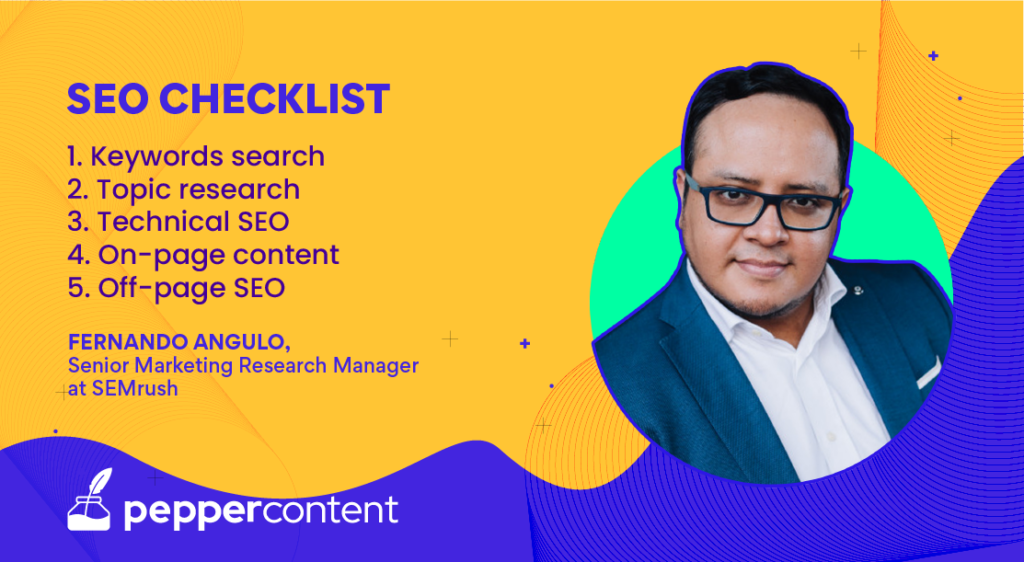
Let’s create a checklist:
1.Keyword research: First of all, we need to start with keyword research: Keyword research 2.0 is to understand what people are searching for. We are building online visibility around three essential questions.
- What is your product? The name of the product or your service?
- How to use it and how to create something with the product or the service you’re providing?
- And the last question is where to find it?
Most content is created around the questions — how to use your product and where to find it. So that people can easily find you on the internet.
2. Topic research: So, after keyword research, we need to measure people’s interest in specific topics. Keyword research can’t help you with that. The thing that can help is topic research. So you need to find what is interesting for the people. And that’s more about PR content than SEO content.
You need to understand what people are interested in, and this topical research will help find what is popular, or in the other term, what’s trending, where people are going to find a solution to their problems.
3. Technical SEO & Site Audit: Next comes doing the fundamental technical SEO, which must be visible to bots and Google. For doing so, you need to run a site audit and find out what is happening with the structure of your website? Is the interlinking working well? You’ll have to see if the redirections are working well with your service.
Next comes page and content audit. Do your audit of the page and content. In terms of URLs, identify what the structure of your URL is? Of course, we need to see if that URL is interlinked. Check the number of words you have on each URL. Pay attention to content hierarchy like H1, H2, H3, H4, etc. Depending on the purpose of the content that you are building, you will need to have, say, 500, 1000, or even 15000 words.

4. On-page and Off-page SEO: You need to assess what your competitors are doing. You need to check what is happening with the impact of the content that you’re publishing. If you get backlinks from other sources, you create more partnerships and get invited to create/co-market/co-create content with other resources. So you are getting that ability that will reflect how good you are with your off-page SEO.
At SEMrush, we follow the 80-20 strategy. 80% of the time is spent on creating and promoting the content marketing plan, and 20% of the time is spent on content creation. So that’s the golden rule here because there are tons of pieces of content out there that nobody’s seeing. That’s why content promotion is very important. Remember, 80% is content promotion, and 20% is content creation.
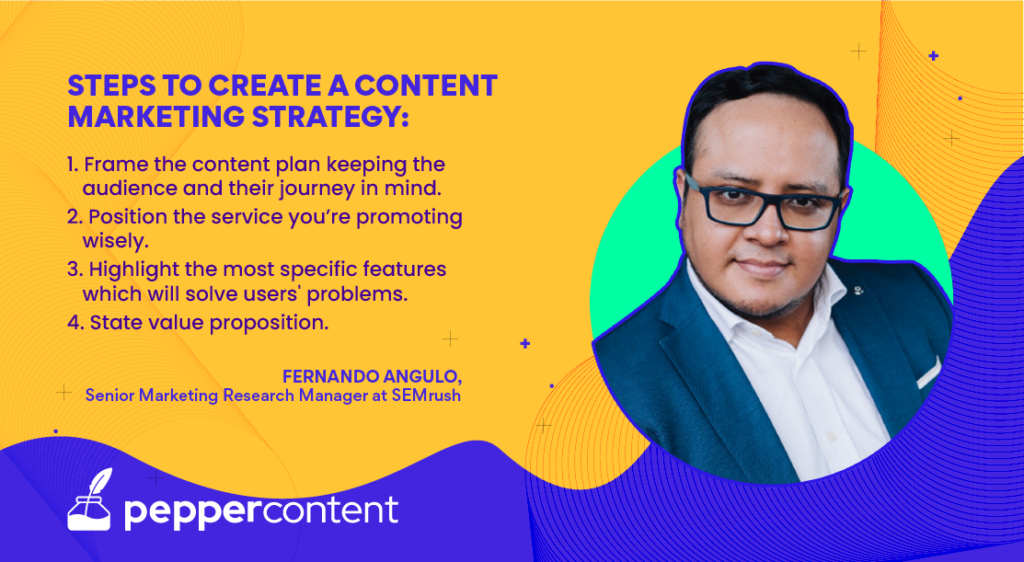
Content marketing strategy begins with:
Step 1
- Who is the audience that you want to reach?
- What is the content that they need?
- What’s the purpose of the content? Does it need to be the top of the funnel, middle of the funnel, or the bottom of the funnel?
So you need to think about the stages and the individuals to create buyer personas and create a journey for the people who will be busy on your website.
Step 2
The second step is defining the position. You need to think about the product you are trying to promote or the services you’re trying to promote through content, identify your unique selling proposition and think about what the value is. Addressing questions about your own product:
- How are you positioning the content that you are creating?
- How is your brand unique? Are your values and unique selling point exceptional?
- What makes your product better than your competitors?
First, about the individual that is the audience. Then we are going to the product or the service. Then we go to the value proposition. So what is the best feature? What is the most important case that people can use? Why should the audience read your piece of content?
And let me give you an example. When I was in Denmark last year, I was with a group of e-commerce owners professionals. And I was asking how many of you are buying from your own e-commerce? And the number of hands that I saw go up was only 10%. So, most people are not consuming their own products. They cannot feel the real pain or satisfaction that their users are going through. So that’s the value proposition the companies are going for; trying their own products.
Step 3
And the last part of the content marketing strategy is to figure out the business case; how beneficial is content curation for your business? And how will content marketing bring more money to the company in the months to come or in the years to come depending on the stage of the business you are in?
Natasha: Brilliant. So one of the things that you have actively worked on during your time at SEMrush is building the influencer marketing program. And I’d love to hear about your experience. So how can B2B companies effectively use influencer marketing as a key marketing strategy?
Fernando: This is my most beloved topic. And when we’re talking about B2B and influencer marketing, in a way, we’re talking about B2C as well. Because people working in B2B are also an audience, they’re also getting into it through people they trust, and it has the same influence as B2C. You can work with B2B, B2C with the same type of influencers, depending on the topic. Trust is everything here.
The benefits include:
- Let me put this in a backstory. In SEMrush, we have a very complicated product to explain to people. So we need to do a site audit, position tracking, taking some examples, and taking some KPIs from the SERPs. So you are talking about complex terms that you need to understand. “For someone starting with their own online business, that’s something difficult to understand at the beginning. You need to have a glossary of words that you want influencers to understand. Because influencers help with translating those difficult terms into straightforward, plain language for other people.”
- Also, influencer marketing provides customers with insights and perspectives. The perspective of a trusted source is super important. So those insights are vital just to make sure that the service is reliable. That is more recognizable for the largest audience. These insights are really important when you’re trying to launch a new product. When you want to create more buzz around a new feature or a new service, influencers can do that because they focus their content on those features and those insights. So insights from influencers are excellent to have when you are building buzz around a feature or a product.
- The third most important thing here is the audience. Everybody loves a really engaged community that’s doing stuff actively. People like to be a part of a group or a specific part of individuals or a community. So, in this case, an influencer that is managing their community is just helping them. They can attract people to follow you. People don’t like following a brand. But they love following other people.
- The third most crucial part is humanizing what you want to transmit to your audience with influencer marketing. Technical SEO can get boring. But, coming from an influencer with insights and perspective, it’s more interesting.
Influencers weave a story around everything like – I reach 500,000 unique visitors on my website doing these three things, or I have more success because of these steps that I followed when I was creating content, or this is the result of my three years of working with SEO.
Storytelling is better when you have people involved. That’s why we campaign saying these are the people who are using SEMrush, and our community is really brilliant and very active. We built different events to connect influencers from other countries like India, Australia, the United States, the United Kingdom, Europe, Latin America. So that enabled our international community around those influencers. People are behind the brand, and the brand is nothing without the people.
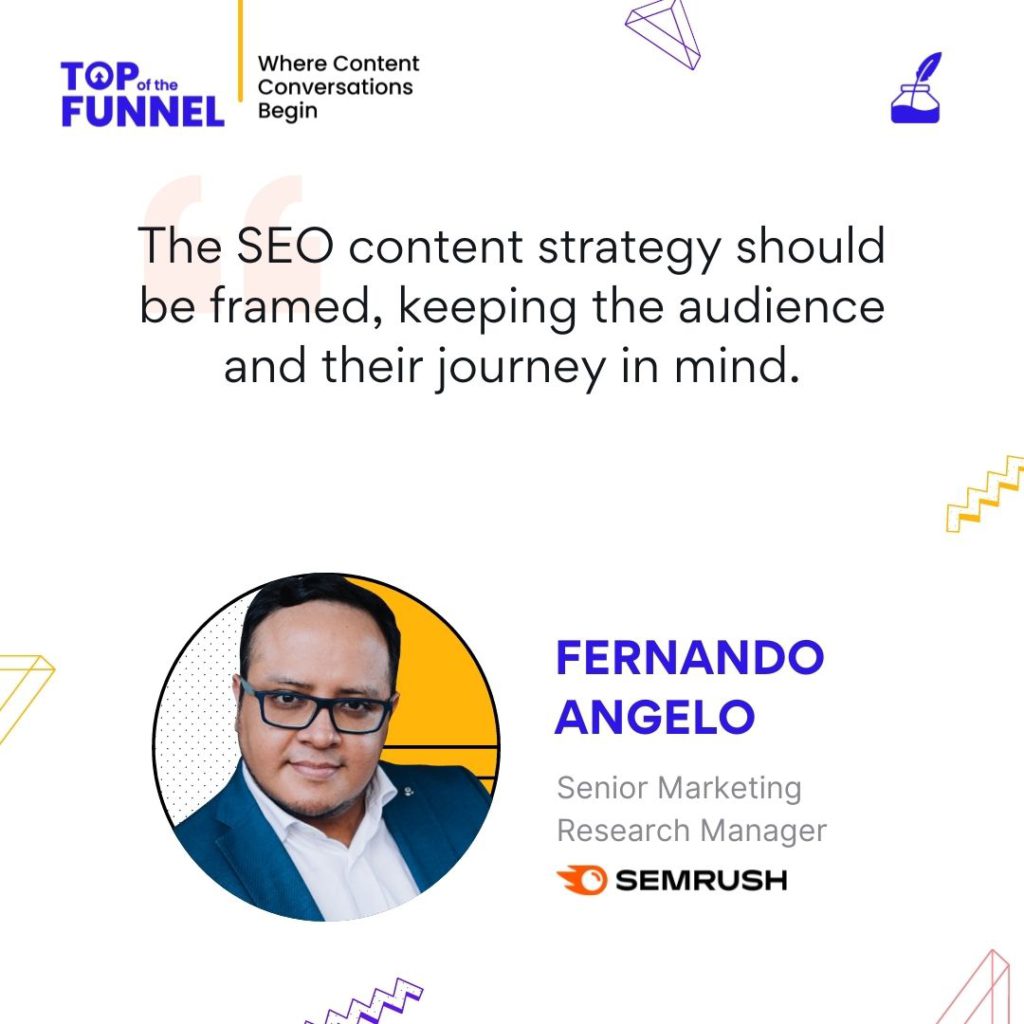
Natasha: That’s amazing. I think it’s good to be at the forefront of your creation, see it multiply, and track its impact. And that brings me to my next question. Talking about impact then SEMrush is also a very great analytical tool. There are so many insights that you know, so seamlessly woven into the process. So on that note, I’d love to ask you what are some of the key metrics that content marketers must watch out for when building their strategy?
Fernando: There are many metrics when we’re talking about content marketing; the most common one is the amount of traffic you’re getting for a specific URL.
We understood that having 1000 people on one single landing page is good, but it’s not a must. We need to have more conversions and more new leads. So traffic, just because of the sake of it, is useless.
So the most efficient critical metrics for content marketing are conversion rates. For example, If you see a banner on our website, you click on that. The second step will be that you see a beautiful piece of content, a landing page. And from that, we’ll create specific content that’ll enable you to take action.
And I will say this for the number of new leads as well. And the number of visitors is essential as well because you can see the click-through rate. How many people are entering overall, and how many of them are converting. We are talking about more specific stuff like brand awareness and measuring the brand impact. The best source to measure it is Google.
When searching for some related questions, how to build a particular keyword’s content marketing strategy? Google is going to show you different types of results. The first result is a feature. The second result is that people are asking for such features and services. And the people also ask if your service is one of them. Suppose you are recognizable there, like texts, paragraphs, lists, or a question box. People ask in the question box. You will be getting that visibility, and people will receive a reply from your company. Your company proves to be a trustful resource. That’s a brand impact. So you are creating more awareness around the trust that you are bringing in through those surf features. So having a number of the surf features is a good metric for brand impact.
The number of featured snippets that you are having, that’s also a good metric for branding, but how many features do you have in terms of your most important keywords? Your most crucial product needs a buzz built around them. So to create awareness for doing that, you need to have featured snippets. And why is that important for brand impact? Because featured snippets are the source for voice search in your devices. If you have your Android device, you must have enabled your voice assistant and the source of those adverts, where you are only asking about the weather or about the time. But when you’re asking specific questions like the definition of an issue, a disease, or anything else, it is taken from featured snippets.
So if you want to open a bank account, if you’re going to understand the mortgage rates in a particular bank, it would be great to have such results for a voice device. And that’s why you need to have this feature snippet and measure its brand impact.
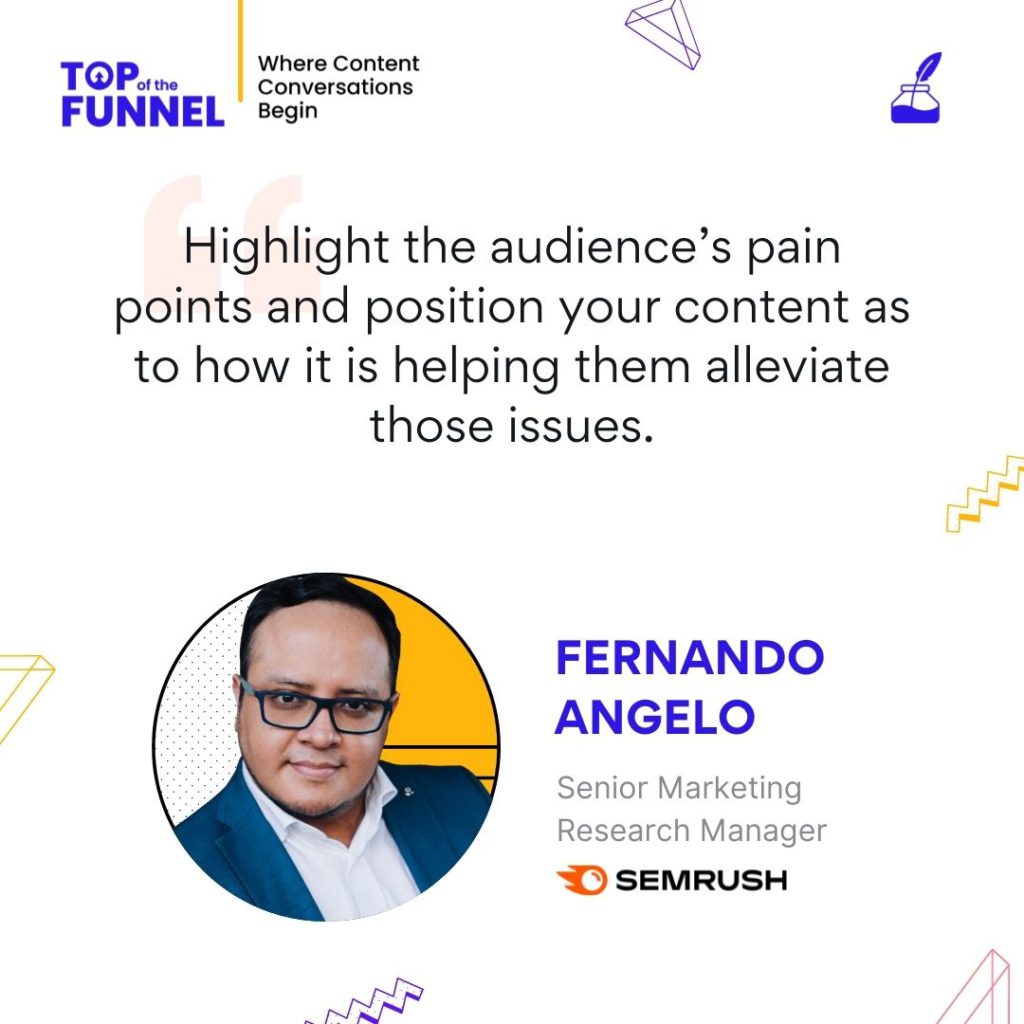
Natasha: Interestingly, you spoke about voice because my next question is about what the future of SEO and its impact on content marketing will look like. But before I say that, I would love just to pick your brains about the pandemic. So how has the pandemic, in your opinion, changed digital marketing and content? And do you see that as a permanent shift or something that will die out on its own for the SEO?
Fernando: In the SEO industry, there were a lot of changes as well. Google has changed many of its results, the local results, the new terms for each website. So there is a lot of stuff in the SEO industry, but it is suitable for the people entering the digital space and what will be happening next year. The digital transformation is something from the past. It’s not something that is coming. It’s already happened. Right now, we are in digital utilization.
We need to go to the next experience, which is changing the economics of things. You don’t need to go to a bank to do your transfer transactions. You don’t need to go to a school or your university for classes. With digital implementation, we have tons of data at our fingertips. I will say it is dangerous as well because it’s challenging to have data privacy. So that’s where artificial intelligence comes in. To identify the paths of the people and to determine the behavior of the people.
So it’s the new start of the artificial intelligence era. And it is enabling content marketing and SEO as well. We will have new ways to do things. And when it comes to content marketing or content creation by artificial intelligence, it’s already there. We can see that some sports tournaments are ready, created, not by people, but only from an artificial intelligence algorithm.
That’s the thing that worries me at that moment, that artificial intelligence is writing for us. The news is happening now; we don’t have any journalists write that for us. It’s just artificial intelligence.
Search queries in voice search terms are also crucial because we have voice search results right now, but we don’t have conversations. We don’t have any logical conversations, continuing a logical path in terms. Person to person. That’s something that we are expecting.
I’m expecting to have a conversation with my Cortana, Alexa, or home device because that will be just a lot of fun. And we will know where they’re taking all that information, this sarcasm, the humor, all that stuff. It’s only a matter of time that we’ll be experimenting with things like that.
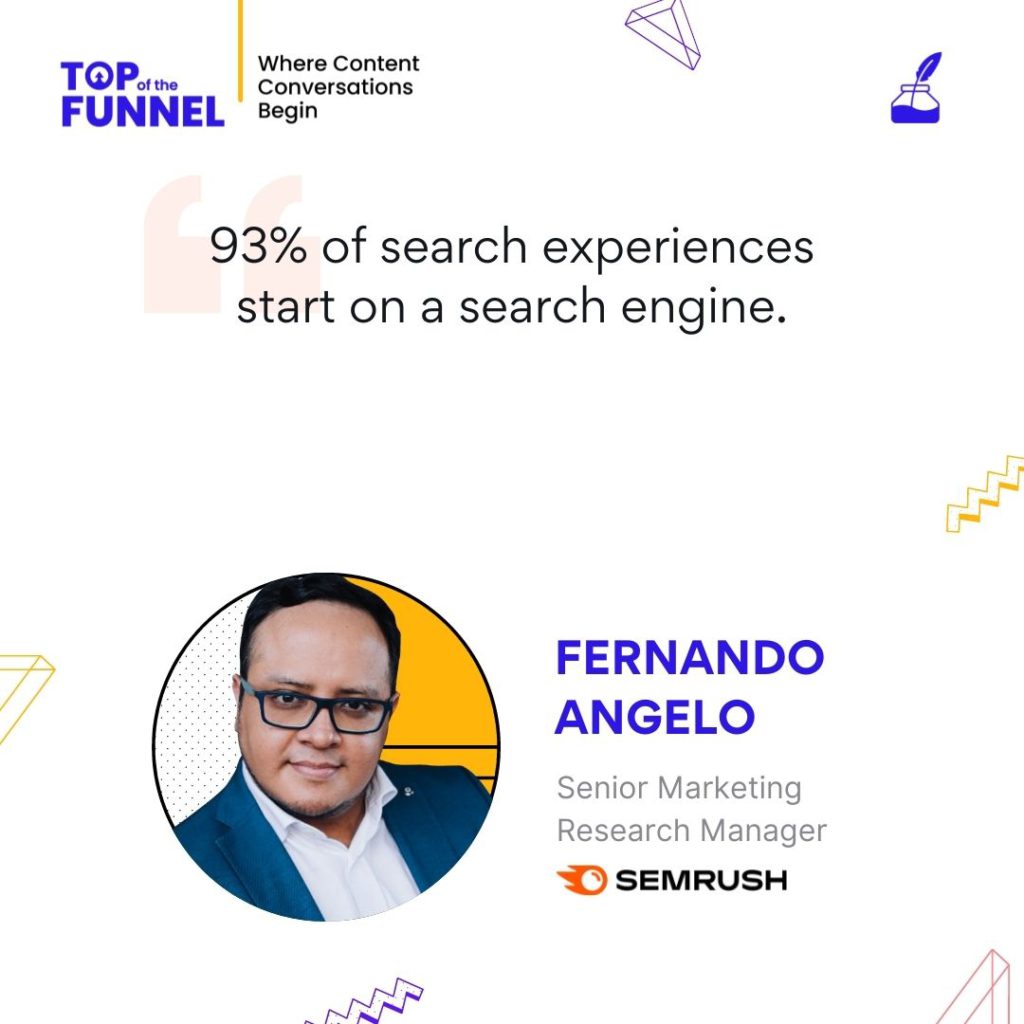
Latest Blogs
Learn how to rank on AI search engines like ChatGPT, Perplexity, and Gemini by optimizing your content for authority, structure, and relevance. Stay ahead in AI-driven search with this strategic guide.
Explore the best healthcare SEO services for your medical practice. Improve online visibility and effectively reach more patients in need of your services.
Discover top social media agencies specializing in banking solutions, enhancing financial services and driving engagement.
Get your hands on the latest news!
Similar Posts

Expert Speak
18 mins read
Season 2 Episode #1 How “The Godfather” of Content Marketing Rules His Domain: Hear It From Joe Pulizzi

Expert Speak
16 mins read
Episode #18: How Brands Can Leverage Content for Community Building

Expert Speak
11 mins read